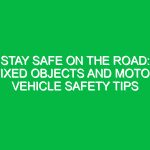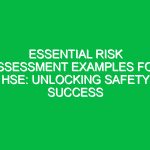Introduction
Personal Protective Equipment (PPE) is crucial in the realm of Health, Safety, and Environment (HSE). The PPE list is not merely a checklist; it serves as a fundamental resource that protects workers from various hazards they may encounter in their workplace. From construction sites to laboratories, the right PPE can mean the difference between safety and severe injury or even loss of life. By understanding the essential items on a PPE list, organizations can effectively safeguard their workforce and promote a culture of safety.
The relevance of a well-structured PPE list in the HSE domain cannot be overstated. As industries evolve, so do the risks associated with them. Hence, it is imperative to regularly update and adapt the PPE list to meet current challenges. With this article, we aim to provide a comprehensive exploration of an essential PPE list, detailing its components, associated risks, and best practices for implementation.
Understanding the Importance of a Comprehensive PPE List
A comprehensive PPE list is critical for several reasons. First, it serves as a guideline for employers to ensure that their employees have access to the necessary equipment for their specific roles. Moreover, it fosters a culture of safety, emphasizing the importance of individual responsibility in the workplace.
Furthermore, a well-maintained PPE list can significantly reduce workplace incidents. According to the Occupational Safety and Health Administration (OSHA), proper use of PPE can prevent approximately 60% of industrial accidents. This statistic underscores the necessity of not only having a PPE list but also ensuring its correct implementation and adherence among employees.
Key Components of an Essential PPE List
An effective PPE list comprises various items tailored to the specific needs of the workplace. Below, we outline the key components that should be considered in any PPE list within the HSE context.
1. Head Protection
Head protection is vital in environments where there is a risk of falling objects or head injuries. The primary item in this category is the hard hat.
- Hard Hats: These are designed to absorb the impact from falling objects and protect the wearer from electrical hazards.
2. Eye and Face Protection
Protecting the eyes and face is crucial in environments with flying particles, chemicals, or intense light.
- Safety Glasses: These should meet clear ANSI (American National Standards Institute) standards to protect against impact.
- Face Shields: Often used in conjunction with safety glasses, face shields protect the entire face from hazardous splashes or flying debris.
- Goggles: For environments where chemicals are in use, goggles provide a snug fit around the eyes, preventing any harmful substances from entering.
3. Hearing Protection
In settings with high noise levels, hearing protection is essential.
- Earplugs: These can reduce sound exposure by up to 30 decibels, making them suitable for most industrial environments.
- Earmuffs: They provide a higher level of protection and are more comfortable for prolonged use.
4. Respiratory Protection
Respirators are vital when working in environments with airborne contaminants.
- Dust Masks: These are suitable for filtering out non-toxic dust.
- Half-Mask Respirators: These are often used in environments with harmful vapors or gases.
- Full-Face Respirators: Providing the highest level of protection, these are utilized in environments with serious respiratory hazards.
5. Hand Protection
The right gloves can protect against cuts, abrasions, chemical exposure, and temperature extremes.
- Cut-Resistant Gloves: Essential for tasks involving sharp objects.
- Chemical-Resistant Gloves: Necessary when handling hazardous substances.
- Heat-Resistant Gloves: Ideal for environments involving high temperatures.
6. Foot Protection
Foot injuries can lead to significant downtime and loss of productivity.
- Steel-Toed Boots: These provide essential protection against heavy objects.
- Slip-Resistant Footwear: Crucial in environments where spills may occur.
- Electrical Hazard (EH) Rated Shoes: Designed to reduce the risk of electric shock.
7. Body Protection
Depending on the nature of the work, body protection can vary significantly.
- High-Visibility Vests: Important for workers in traffic-heavy areas to enhance visibility.
- Coveralls: Protect against dirt, chemicals, and other hazardous materials.
- Flame-Resistant Clothing: Necessary for workers in environments with potential fire hazards.
8. Fall Protection
In many industries, particularly construction, fall protection is a non-negotiable aspect of safety.
- Safety Harnesses: Essential for workers operating at heights.
- Guardrails: Used to prevent falls from elevated surfaces.
- Lanyards: These connect workers to a secure anchor point to prevent falls.
Potential Hazards and Safety Considerations
While PPE is designed to protect, it is essential to recognize that it is not a standalone solution. The effectiveness of PPE can be compromised if not used correctly or if the appropriate type is not selected based on the risks present.
For example, wearing a dust mask in a chemical spill scenario could lead to severe inhalation injuries. Similarly, failing to inspect and maintain PPE can lead to equipment failure, exposing workers to significant risks.
It is essential to conduct regular training sessions to ensure all employees are familiar with how to use and maintain their PPE effectively. Such training not only enhances safety but also fosters a culture of responsibility among workers.
Best Practices for Implementing a PPE List
To maximize the effectiveness of a PPE list, organizations should follow these best practices:
1. Conduct a Risk Assessment
A thorough risk assessment helps identify the specific hazards present in the workplace. This assessment will inform the selection of appropriate PPE for each role.
2. Regularly Update the PPE List
As work environments change, so should the PPE list. Regular reviews ensure that the list remains relevant and effective in addressing current risks.
3. Provide Training and Resources
Training employees on the proper use and care of PPE is critical. This includes how to inspect equipment for wear and tear and understanding when and how to replace it.
4. Encourage Employee Feedback
Employees are often the best source of information regarding the effectiveness of PPE. Encourage them to share their experiences and suggestions for improvements.
5. Monitor Compliance
Regular monitoring of PPE usage can help identify gaps in compliance. This may involve random checks or audits to ensure that all employees are equipped and using their PPE correctly.
Regulations and Standards Governing PPE
Various regulations govern the use of PPE in the workplace. In the United States, OSHA has established standards that require employers to provide appropriate PPE to employees exposed to workplace hazards.
Additionally, the National Institute for Occupational Safety and Health (NIOSH) provides guidelines on the selection and use of PPE. Understanding these regulations is crucial for compliance and ensuring the safety of the workforce.
Conclusion
A robust PPE list is essential for promoting health, safety, and environmental sustainability in any workplace. By comprehensively understanding the various components of PPE, organizations can create a safer environment for their workforce.
As the risks associated with different industries evolve, so too must the PPE list. Regular updates, employee training, and adherence to regulations are vital for maintaining a culture of safety.
In a world increasingly focused on occupational health and safety, investing time and resources into a comprehensive PPE list is not just good practice—it’s a necessity. By safeguarding your workforce today, you are paving the way for a safer, more productive tomorrow.


